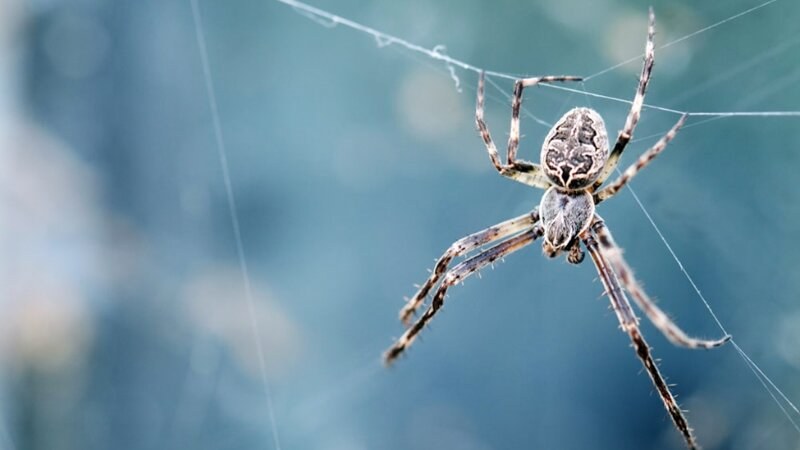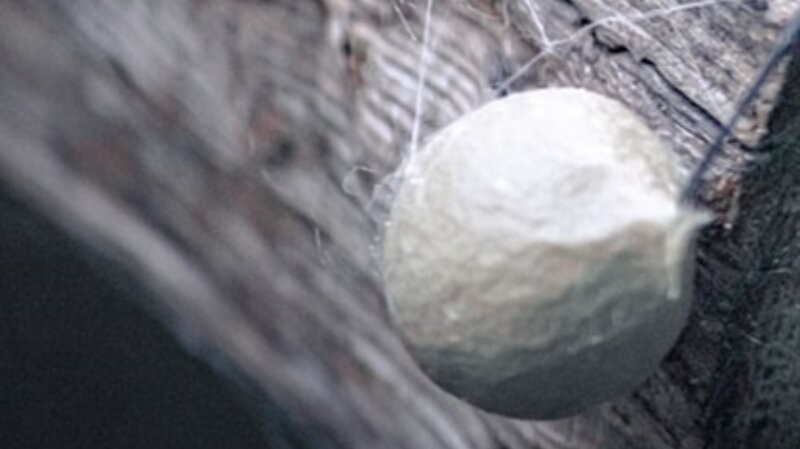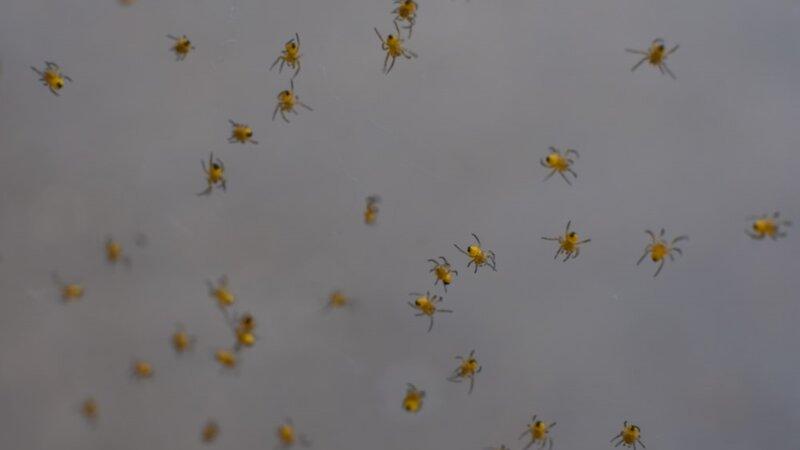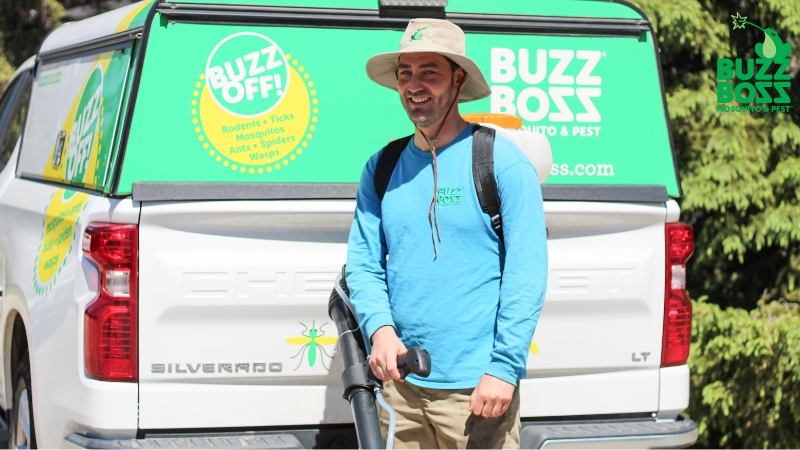Dealing with Spider Egg Sacs in Winnipeg: Safely Removing and Preventing Infestations in Your Yard
Reading time: 6 minutesIn Winnipeg, spider infestations are common pretty much all year round. Depending on the species, you might see some more active in the summer or fall than others, but generally, they’re present all year long, with some hibernating in the winter.
Infestations usually start with hidden spider egg sacs, often tucked away in corners. These are nursing grounds for potentially hundreds of spiders poised to populate your outdoor space.
You need to identify and remove these sacs to prevent a larger infestation.

Spider Egg Sacs—Appearance, Location, and Lifecycle
Remember, seeing a spider is not a warning sign. It’s when it disappears that you should be worried. Because chances are, it’s laying eggs somewhere.
Spider egg sacs are typically small, rounded, and woven from spider silk, giving them a cottony or papery texture. Depending on the spider species, they can be white or yellowish to brown.
You'll most likely find them in less disturbed areas of your yard. Each egg sac can contain anywhere from a few dozen to several hundred eggs, depending on the spider species. For instance, a single common house spider might lay up to 250 eggs in one sac.
So, failing to address an egg sac promptly can lead to an increase in the spider population. Spiders typically pass through several developmental stages from egg to adulthood, and this process can unfold pretty quickly under the right conditions, emphasizing the need for swift action if you discover egg sacs.
How to Identify Common Spiders and Their Egg Sacs in Winnipeg

House Spiders (Tegenaria domestica) are among the most common spiders found in Winnipeg. Their egg sacs are teardrop-shaped, creamy white, and have a papery texture. You might find these sacs in dark, secluded areas where the spiders can spin their webs undisturbed.
Wolf Spiders (Lycosidae), on the other hand, do not create webs. Instead, female wolf spiders carry their rounded, off-white egg sacs attached to their spinnerets, making them mobile. After the spiderlings hatch, they climb onto the mother’s back, where she carries them for several weeks. These spiders and their egg sacs are often spotted at ground level, hiding in or around debris and leaves outside, and can occasionally venture indoors.
Jumping Spiders (Salticidae) and Orb-Weavers (Araneidae) are also prevalent in the area. Jumping spiders' egg sacs are small, white, and fluffy, often hidden under bark or leaf litter. Orb-weavers typically place their spherical, slightly silken egg sacs in the center of their webs, usually located on lawns and near outdoor lights.

Removing Spider Egg Sacs Safely
Here's a guide to ensure that you handle and dispose of spider egg sacs effectively and prevent any future infestations:
- Prepare the Area. Before you start, make sure the area around the egg sac is clear of clutter to provide easy access and minimize the risk of spiders escaping into hidden corners. If the egg sac is in a web, gently expose the sac by removing some of the surrounding web with a stick or broom handle, ensuring you don’t disturb the sac prematurely.
- Wear Protective Clothing and Equipment. Wear gloves to protect your hands from potential bites and to prevent direct contact with the egg sac. Wear a mask to avoid inhaling particles, especially in dusty areas or if you’re allergic to dust and cobwebs. Use goggles if the sac is located above ground level to protect your eyes from falling debris or disturbed spiders.
- Removing the Egg Sacs. The safest and most effective method to remove spider egg sacs, particularly those out of reach or in delicate areas, is with a vacuum cleaner with a hose attachment. This method ensures that the sac is contained immediately. For accessible egg sacs, you can go for a manual removal. Carefully use tweezers or a soft brush to detach the sac from its surface and place it directly into a sealed plastic bag.
- Disposing of Egg Sacs Properly. Once removed, it’s crucial to dispose of the egg sac properly to prevent it from hatching elsewhere. Seal the plastic bag tightly and place it in an outdoor garbage bin. Alternatively, submerge the sealed bag in soapy water for a few hours to make sure that the eggs are non-viable before disposal.
- Proactive Measures to Keep Spiders Out. This is what we call proactive pest control. You take precautions to ensure that your property is protected before a ‘few’ spiders become a spider infestation.
Tips to Make Your Outdoor Space Less Inviting for Spiders
You want to create an environment that discourages spiders from entering and nesting.
Reducing Clutter
Clutter provides perfect hiding spots for spiders. Keep your yard tidy by clearing away debris, stacks of wood, and dense vegetation close to your home’s structure.
Trim Vegetation
Trim back bushes, shrubs, and overgrown plants that provide hiding spots for spiders.
Reduce Lighting
Spiders are attracted to light because it attracts prey insects. Consider using yellow or sodium vapour lights instead of white lights, which are less attractive to insects and, consequently, to spiders.
Regular Maintenance
Keep your outdoor furniture, cushions, and umbrellas clean and free of debris. Spiders may hide in these items, especially if they’re not regularly used.
Natural Deterrents and Remedies
Several natural substances can repel spiders. Consider using essential oils like peppermint, tea tree, or lavender. Apply a few drops to cotton balls and distribute them in areas where spiders are frequent. Vinegar is another effective deterrent. Mix equal parts of vinegar and water in a spray bottle and apply it to potential entry points and nesting areas.
Professional Help
Professional pest control is more than just getting rid of a spider infestation in your yard. It can also mean complete proactive pest control to create a defensive line around your house so that no insects get in the first place. That’s what Buzz Boss specializes in.

Know When to Call in the Pest Control Professionals
In certain scenarios, tackling spider infestations on your own might not be advisable.
- Large Infestations. If you notice multiple spiders or egg sacs throughout your yard, this could indicate a large infestation. Professional pest control companies have the tools and techniques to manage widespread issues more effectively than DIY methods, ensuring complete eradication.
- Repeated Occurrences of Egg Sacs. Finding egg sacs repeatedly, even after removal, suggests a persistent underlying problem that DIY efforts may not fully address. Professionals can identify the source of the infestation and implement long-term solutions to prevent future occurrences.
- Potentially Dangerous Spiders. If you suspect the presence of venomous spiders such as the black widow or the brown recluse, it's imperative to call professionals. Misidentifying or mishandling such spiders can pose serious health risks.
If you’re wondering what else is lurking in your Winnipeg yard, check out our blog: 8 Most Common Pests in Winnipeg.
Your Friendly Neighbourhood Pest Control to the Rescue
A spider infestation is a cause for concern, especially if you don’t know what type of spider you’re dealing with. With great power comes great responsibility, and sometimes the spiders have to go.
Enter BuzzShield® Insect–—our patented program specifically designed to take care of all kinds of insect infestations proactively and swiftly. You could also go for our BuzzShield® Complete package for all-around protection against different kinds of pests, including insects, rodents, and wasps.
Buzz Boss provides pest control services in Winnipeg, Calgary, Edmonton, Red Deer, Regina, Saskatoon, and Okanagan.

